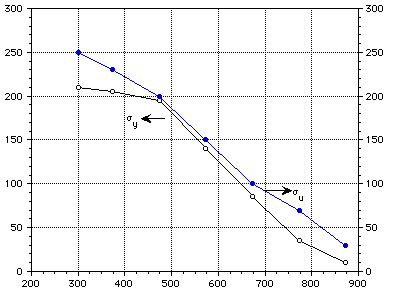 (1)
(1)
Pure copper and some selected copper alloys are widely used in experimental plasma confinement devices and have also been proposed for various fusion power plant applications where a high thermal or electrical conductivity material is required.
Copper based alloys have been considered as possible candidate materials for first wall, limiter and divertor components and as field coils and stabilisers for coils in magnetic confinement fusion devices. Their use as a first wall material has been proposed in designs where high thermal loads are expected on the first wall or where a shell of high electrical-conductivity material is required. Copper alloys have also been considered for the electrically-conducting central column of the tight aspect ratio tokamaks.
The main advantage of copper alloys lies in their high thermal conductivities, which allows for higher heat fluxes.
GENERAL PROPERTIES - PURE COPPER [1]
Physical properties
Boiling Point : 2567 C
Density @ 20 C : 8.96 g/cm3
Melting Point : 1083 C
Electrical properties
Electrical Resistivity @ 20 C : 1.69 u [[Omega]] cm
Cold junction @ 0 C,
Hot junction @ 100 C : + 76 mV
Temperature Coefficient @ 0 - 100 C : 0.0043/K
Mechanical properties
Material Condition Soft Hard Polycrystalline
Bulk Modulus (GPa) 137.8
Hardness-Vickers 49 87
Izod Toughness 58 68
(J/m)
Poisson's Ratio 0.343
Tensile Strength 224 314
(MPa)
[[sigma]]y (MPa) 54 270
E (GPa) 129.8
Thermal properties
Latent Heat of Evaporation : 4796 J/g
Latent Heat of Fusion : 205 J/g
Linear Expansion Coefficient
@ 0 - 100 C : 17.0x10-6 m/m-K
Specific Heat @ 25 C : 385 J/kg-K
Thermal Conductivity, @ 0 - 100 C : 401 W/m-K
DATA AND CORRELATIONS
The thermal and structural properties as a function of temperature are presented in Table 1, refs [2, 3, 4, 5]. Polynomial correlations of the thermal and structural properties as functions of temperature, using the data of Table 1, are as follows:
 (1)
(1)
 (2)
(2)
 (3)
(3)
 (4)
(4)
 (5)
(5)
with T in degrees Kelvin and Eqs (1), (2) and (4) are valid in the temperature range 293-1300 K, Eq (3) in the range 293-873 K and Eq (5) in the range 293-1000 K.
Figures 1-3 show the variation of properties with temperature.
TABLE 1 Thermal and structural properties of pure copper
T K [[rho] E GPa [[nu]] k W/m-K c J/kg-K [[sigma]] [[alpha]] [[sigma]]
] y MPa (10-6) u MPa
kg/m3 m/m-K
293 8933 129.80 0.34 400.68 383.48 210.74 15.40 250.42
300 401.00 385.00 210.00 15.40 250.00
350 396.78 392.00 20.652 15.77 238.07
373 395.20 394.73 205.00 15.94 230.00
400 393.00 398.44 205.00 16.15 223.03
450 389.93 403.00 197.81 16.53 204.85
473 388.35 405.90 195.00 16.60 200.00
500 386.50 408.00 181.50 16.92 184.29
550 383.08 412.00 156.74 17.31 162.12
573 381.50 414.80 140.00 17.49 150.00
600 379.00 417.00 126.48 17.70 139.11
650 376.23 421.00 94.83 18.10 116.00
673 374.65 422.42 85.00 18.30 100.00
700 372.80 425.00 65.93 18.50 93.59
773 367.80 429.76 35.00 19.10 70.00
800 366.00 432.00 26.32 19.32 53.85
873 360.96 437.82 10.00 20.00 30.00
900 359.11 441.00 20.15 26.00
1000 352.00 451.00 21.00 16.15
1073 347.26 460.07 21.60
1100 345.41 464.00 21.88
1200 339.00 480.00 22.76
1250 335.13 490.00 23.21
1300 331.71 506.00 23.67
k (W/m-K) c (J/kg-K)

Temperature (K)
Figure 1 : Thermal conductivity and specific heat of pure copper.
[[sigma]]y (MPa) [[sigma]]u (MPa)

Temperature (K)
Figure 2 : Yield stress and ultimate tensile strength of pure copper.

Temperature (K)
Figure 3 : The thermal expansion coefficient of pure copper.